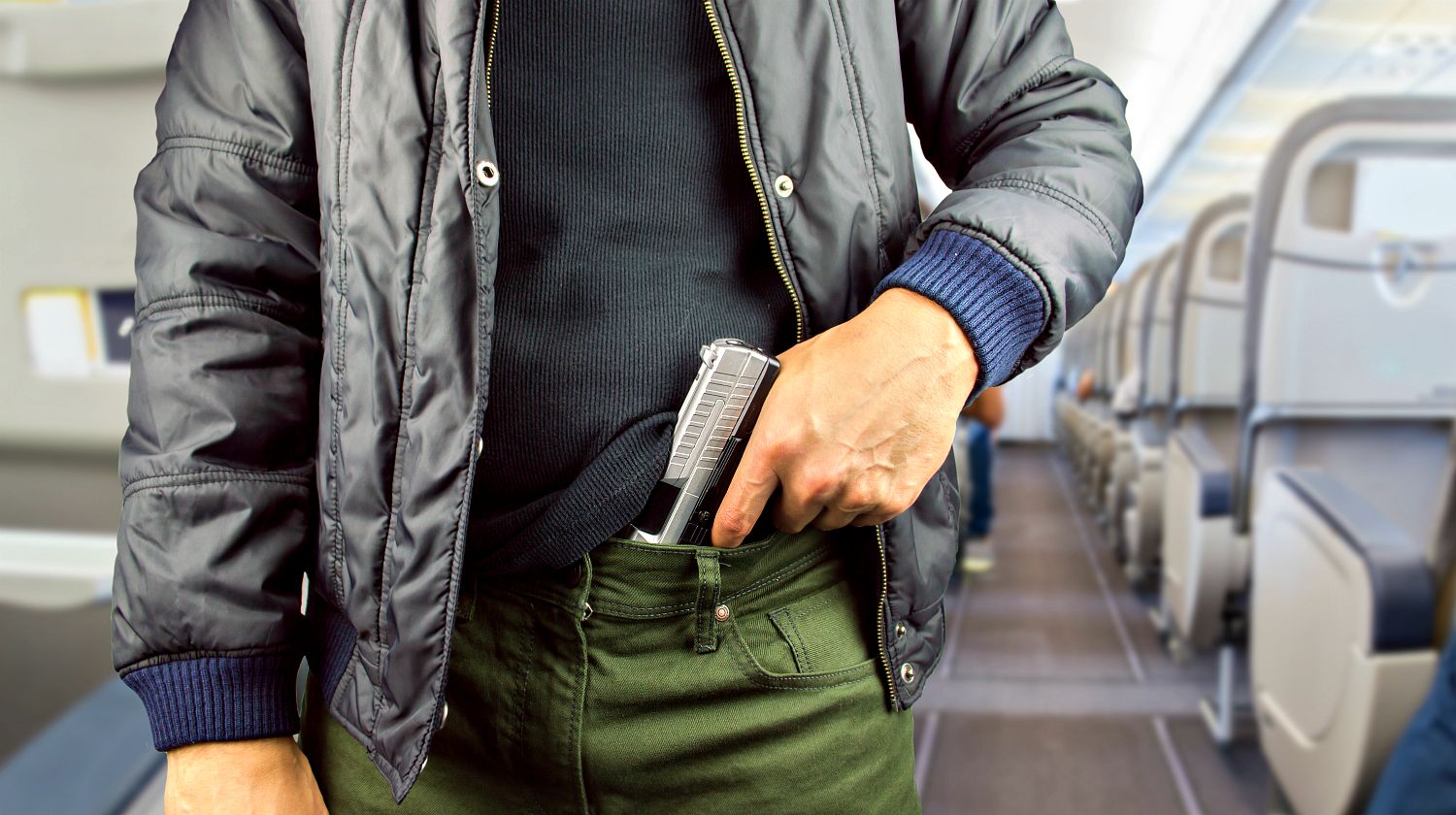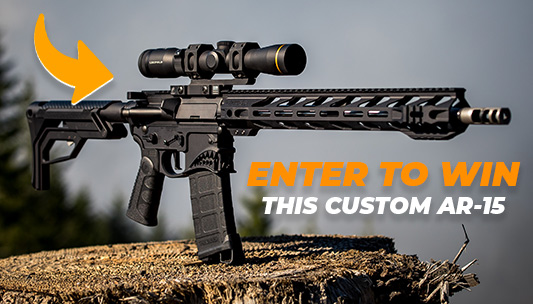Featured
How To Fly With A Firearm
Published
2 years agoon

A lot of gun owners have questions about how to fly with a firearm. Read on and be aware of the security regulations and legal aspects of guns and airline rules.
RELATED: Flying With Firearms | Part Two: During Travel And After Arrival
In this article:
How to Fly with a Firearm | What You Need to Know
Flying with a Gun
After we published this piece about interstate travel with a firearm, we received a lot of questions about how to fly with a gun.
But, because I've never flown with a firearm before, I didn't feel comfortable writing about it. I'm fortunate enough to know some people who have, and they just happen to be firearms attorneys.
The following text is borrowed with permission from the PENNLAGO website and the McShane Firm. It covers how to travel with a firearm when your mode of travel is a plane.
Security Standards
With modern security standards in place, the thought of flying with your firearms can be overwhelming. Making a mistake regarding security regulations can cause more than mere aggravation, as doing so can carry serious legal consequences.
Contrary to popular belief, the rules aren’t extremely complex. A firm grasp on these rules will allow for confident and peaceful air travel with your firearms.
First and foremost, when traveling with your firearms, be certain that your firearms are legal to possess in the state. These are the states from which you depart and the state in which you will ultimately arrive.
As every state and sometimes local laws differ, and those differences are beyond the scope of this discussion, be sure to conduct extensive research or consult an attorney before you travel about the gun laws in that state. In particular, pay close attention to laws regarding possession (open carry versus concealed carry), automobile travel, restrictions on magazine capacity, and types of ammunition.
In short, in order to travel with your firearms, they must be unloaded, locked in a hard case, declared and checked. Otherwise, it may be illegal per 49 USC § 46505.
TSA Approved Gun Cases
Your safe and legal travels will begin before you set foot in the airport, as it is a requirement to store your firearms in a hard-sided case. It is important that the case you use be fairly sturdy.
The airlines will not permit cases that easily open. It’s important to recognize that a “firearms case” is neither a fail-safe option nor your only option.
For instance, it is entirely possible that your firearms case will not meet this standard, or that a case not specifically designed for firearms will meet this standard. Do not mark the case to indicate that it’s a firearm.
Once you find a suitable case, you’ll need to lock it. The rules require that only you have the ability to open the lock.
This is vital. As a result, the utilization of “TSA luggage locks” is likely not an acceptable method to lock firearms because entry will be accessible to somebody other than yourself.
If you choose a padlock which requires a key, be sure to keep the key in your possession at all times.
Your firearm must be unloaded when you travel. According to federal regulations, a firearm is loaded if it has “a live round of ammunition, or any component thereof, in the chamber or cylinder or in a magazine inserted in the firearm.”
So in other words, it must be entirely unloaded. While federal regulations do not prevent you from storing a loaded magazine which is not attached to a firearm, many airlines prohibit this practice in their own policies.
It is safest to store all ammunition in a manufacturer’s box in a suitcase or bag separate from your firearm.
Can you fly with gun parts? Now that your firearm is ready to go, you’ll need to understand what to do when you get to the airport.
The airlines will not allow firearms onto the aircraft in carry-on bags. Items prohibited from carry-on baggage include all firearms, ammunition, firearm parts, firearm frames, receivers, clips, and magazines.
Be sure you never enter the security checkpoint with any of these items, as knowingly or intentionally doing so is a violation of federal law.
RELATED: More Guns Make It To TSA At American Airports. But Why?
Hypothetical Scenario
Logically, if you can’t bring your firearm in a carry-on bag, you must check your firearm.
When you check your firearm, you must be sure to declare you are checking a firearm. After you do so, you will be able to proceed to your flight and meet your firearm at your destination.
To put this all into perspective, let’s discuss a hypothetical scenario. We begin in Pennsylvania, where it is legal to own and possess a handgun as long as you do not have a federal disqualifying event (outlined in 18 USC 922), and any state disqualifying event (outlined in 18 PA 6105).
For the purposes of this hypothetical, this person holds a valid License to Carry Firearms in Pennsylvania. This same person is traveling to Oklahoma, where it is similarly legal to possess the same handgun, and this person has no state-based restrictions per the Oklahoma statute.
Luckily, for our traveler, our Pennsylvania License to Carry Firearms is honored in Oklahoma. This person who is ready to travel stores the totally unloaded handgun and two empty magazines in a very sturdy hard case.
The traveler locks the hard case (with no stickers or other notes on it that alerts someone that there is a gun inside) with a heavy padlock that uses a key to open it. The traveler places the key on his or her key chain that never leaves his or her possession.
This key should not leave our traveler’s pocket except at the security checkpoint. Our traveler wants to have ammunition when he or she arrives at our destination.
After all, what is the sense of concealed carry with an unloaded firearm, right? So our traveler packs four factory boxes of ammunition in his or her non-carry-on suitcase.
That suitcase does not need to be locked. When our traveler arrives at the airport, he or she heads straight to the check-in counter.
Once there, the traveler informs the employee assisting that he or she wishes to check an unloaded firearm. The request should not meet with any fanfare or commotion.
If it does, our traveler stays calm and simply asks for a supervisor. Our traveler considers videotaping with his or her cell phone the encounter if the treatment continues.
The firearms case and the suitcase containing our ammo undergoes checking and on its way. Our traveler goes to the TSA line.
The traveler is mindful of the federal law against having any part of a firearm or ammunition to one on his or her person double checks everything (including tread of any shoes) before getting in the line. Our traveler gets to the destination and picks up the checked luggage.
One quick caveat: airlines may set their own policies and procedures when it comes to checking firearms. Our hypothetical scenario is compliant with the policies of some airlines.
However, as this discussion’s focus is the law, please check with your airline regarding their policies well in advance of your travels.
American Airlines: https://www.aa.com/i18n/travelInformation/baggage/firearms.jsp
Delta Airlines: http://www.delta.com/content/www/en_US/traveling-with-us/baggage/before-your-trip/special-items.html#shooting
Southwest Airlines: https://www.southwest.com/html/customer-service/baggage/special-luggage-pol.html (Select “Guns and Ammunition” on the left side)
United Airlines: http://www.united.com/web/en-US/content/travel/baggage/sports.aspx
US Airways: http://www.usairways.com/en-US/traveltools/baggage/specialitems.html
Watch this video by Military Arms Channel about traveling with firearms on airlines:
As you can see, it’s not the most painful process. Law-abiding gun owners don’t have to leave their guns at home if they educate themselves and take the proper precautions. Know the gun laws of each state you'll be in during your travel and everything should go smoothly.
Did you get the information you needed on flying with a gun? Share your thoughts with us in the comments section below!
UP NEXT:
- Interstate Driving While Carrying A Firearm: What You Need To Know
- Airport Terminals: Is It A Place For Your Guns?
- Gun Control | 5 Guns The Government Will Ban First
Editor’s Note: This post was originally published on April 5, 2016, and has been updated for quality and relevancy.
Originally posted on July 10, 2019 @ 9:00 AM


Veterans Day Special: Top Military-Inspired Firearms for Civilians

Top Cold-Weather Concealed Carry Gear for Winter 2024

Ruger American Rifle Gen II: Affordable Precision Meets Performance

Tipped Bullets: Everything You Need to Know About Them!

Ammunition Vending Machines: The Controversial Rise Grocery Stores

Minnesota Gun Safety Laws: Balancing Rights and Public Safety




Warren Roach
June 19, 2016 at 10:48 PM
It would depend on the situation. If the plane is diverted, & they make you re-check your bags, this strategy probably would not work. Any bags left on the carousel would likely be viewed as “suspicious” & subject to removal to a secure area, for examination, if you’re lucky. If you’re not so lucky, they might destroy it, and if you’re really unlucky, they’ll detain you for questioning, or worse.
If you ever find yourself in such a situation, your best option is to inform the crew, & ask them to contact airport security, and have airport security collect your bags & escort you to either the check-in station, or a cab so you can get to your hotel. If you find yourself unwillingly stuck in NY overnight, you may also want to have the airline explain the situation to local law enforcement, so that: 1. There’s more witnesses involved, & 2. There’s less chance for any “misunderstandings” on the law enforcement end.
Technically, in such a situation, you are protected by the Firearms Owners Protection Act, but unfortunately, as we all know, as a firearms owner, even when you’re right, you have to prove you’re right, as well as innocence, which can be quite costly in the wrong situation.